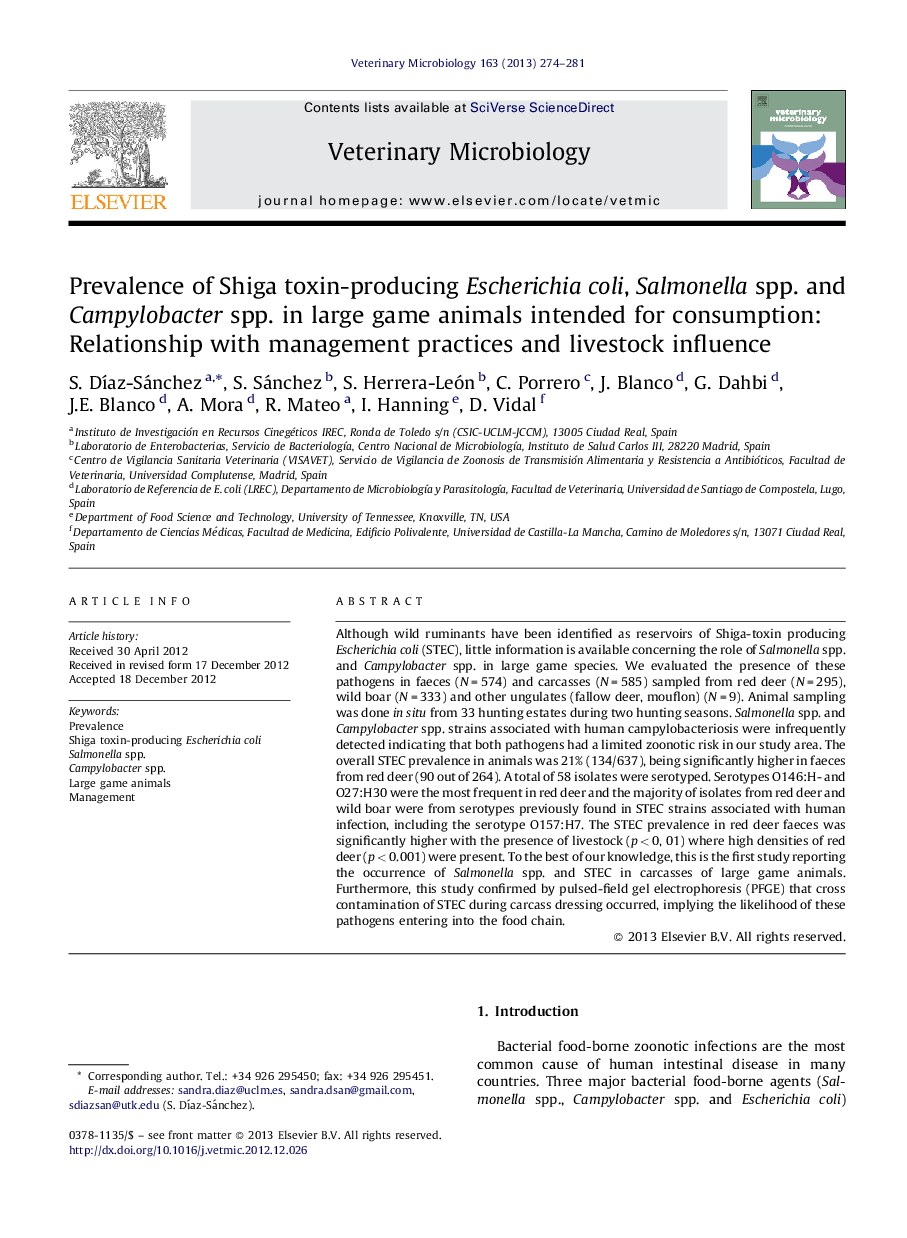| کد مقاله | کد نشریه | سال انتشار | مقاله انگلیسی | نسخه تمام متن |
|---|---|---|---|---|
| 2466866 | 1555376 | 2013 | 8 صفحه PDF | دانلود رایگان |

Although wild ruminants have been identified as reservoirs of Shiga-toxin producing Escherichia coli (STEC), little information is available concerning the role of Salmonella spp. and Campylobacter spp. in large game species. We evaluated the presence of these pathogens in faeces (N = 574) and carcasses (N = 585) sampled from red deer (N = 295), wild boar (N = 333) and other ungulates (fallow deer, mouflon) (N = 9). Animal sampling was done in situ from 33 hunting estates during two hunting seasons. Salmonella spp. and Campylobacter spp. strains associated with human campylobacteriosis were infrequently detected indicating that both pathogens had a limited zoonotic risk in our study area. The overall STEC prevalence in animals was 21% (134/637), being significantly higher in faeces from red deer (90 out of 264). A total of 58 isolates were serotyped. Serotypes O146:H- and O27:H30 were the most frequent in red deer and the majority of isolates from red deer and wild boar were from serotypes previously found in STEC strains associated with human infection, including the serotype O157:H7. The STEC prevalence in red deer faeces was significantly higher with the presence of livestock (p < 0, 01) where high densities of red deer (p < 0.001) were present. To the best of our knowledge, this is the first study reporting the occurrence of Salmonella spp. and STEC in carcasses of large game animals. Furthermore, this study confirmed by pulsed-field gel electrophoresis (PFGE) that cross contamination of STEC during carcass dressing occurred, implying the likelihood of these pathogens entering into the food chain.
Journal: Veterinary Microbiology - Volume 163, Issues 3–4, 3 May 2013, Pages 274–281